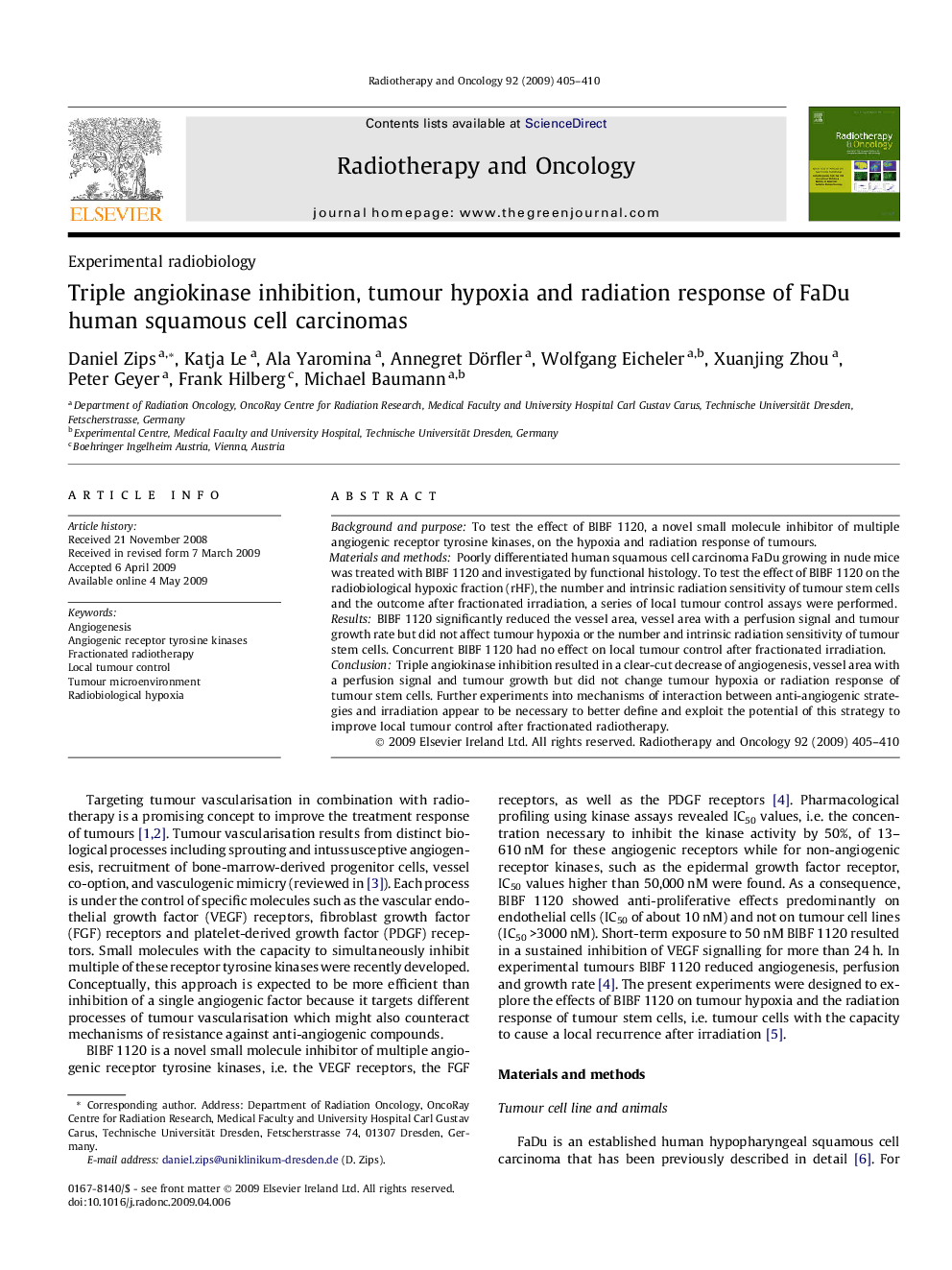| Article ID | Journal | Published Year | Pages | File Type |
|---|---|---|---|---|
| 2158915 | Radiotherapy and Oncology | 2009 | 6 Pages |
Background and purposeTo test the effect of BIBF 1120, a novel small molecule inhibitor of multiple angiogenic receptor tyrosine kinases, on the hypoxia and radiation response of tumours.Materials and methodsPoorly differentiated human squamous cell carcinoma FaDu growing in nude mice was treated with BIBF 1120 and investigated by functional histology. To test the effect of BIBF 1120 on the radiobiological hypoxic fraction (rHF), the number and intrinsic radiation sensitivity of tumour stem cells and the outcome after fractionated irradiation, a series of local tumour control assays were performed.ResultsBIBF 1120 significantly reduced the vessel area, vessel area with a perfusion signal and tumour growth rate but did not affect tumour hypoxia or the number and intrinsic radiation sensitivity of tumour stem cells. Concurrent BIBF 1120 had no effect on local tumour control after fractionated irradiation.ConclusionTriple angiokinase inhibition resulted in a clear-cut decrease of angiogenesis, vessel area with a perfusion signal and tumour growth but did not change tumour hypoxia or radiation response of tumour stem cells. Further experiments into mechanisms of interaction between anti-angiogenic strategies and irradiation appear to be necessary to better define and exploit the potential of this strategy to improve local tumour control after fractionated radiotherapy.
